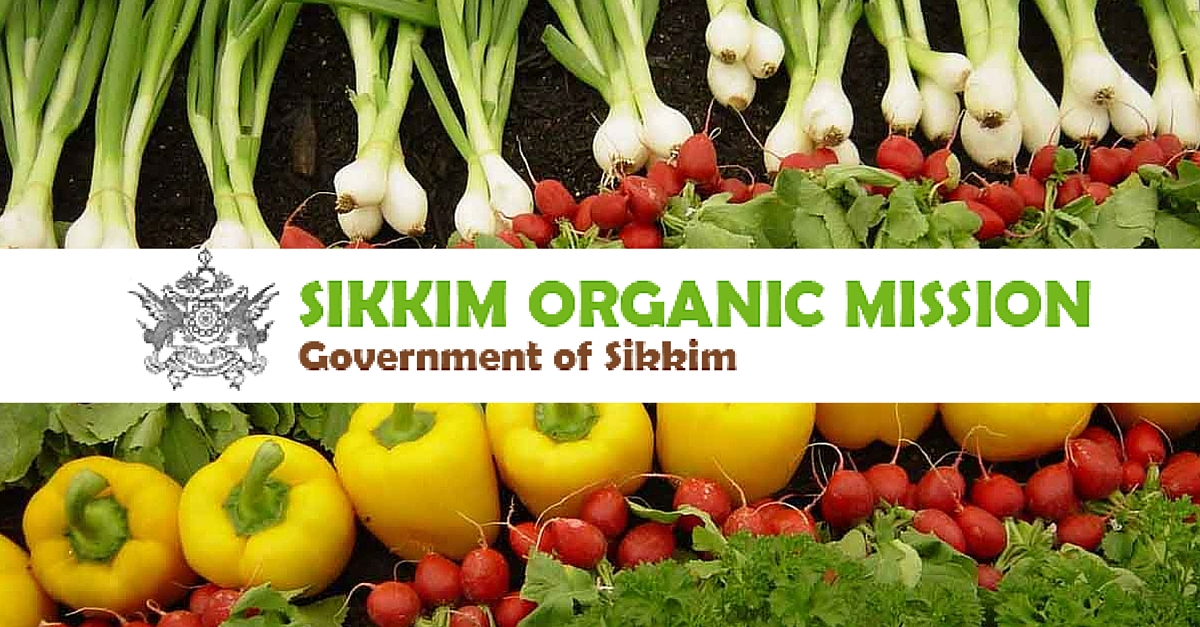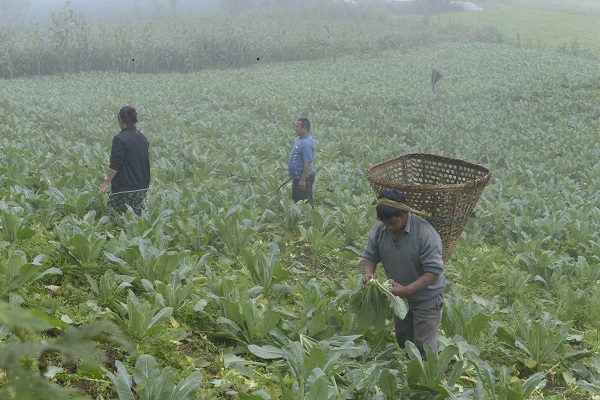How Sikkim Beat Himalayan Odds to Become India’s First Organic State
Prime Minister Modi recently announced that Sikkim has become the first Organic State of India. The journey wasn’t easy, the questions were hard and the challenges looked insurmountable. But today, the demand for Sikkim’s organic produce has soared and farmers in the state are already earning 20% more than they did earlier.

Prime Minister Modi recently announced that Sikkim has become the first Organic State of India. The journey wasn’t easy, the questions were hard and the challenges looked insurmountable. But today, the demand for Sikkim’s organic produce has soared and farmers in the state are already earning 20% more than they did earlier.
“Hum Log ab khusi khusi se kaam karte hain. Ham sab gaao waale milke kaam karte hain. Sab bahut active ho gaye hain organic mission ke baad.” (We villagers work happily now, in a spirit of togetherness. Everyone’s become very active after the organic mission was announced) – Norkit, an organic farmer, Sikkim.
Up in the Himalayas, there’s an organic spirit that is running high. Farmers are happy, youngsters are becoming entrepreneurs, tourists are flocking and business is flowing in from all over the country to the state of Sikkim. This upsurge is the result of a Himalayan task that Sikkim believed it could achieve – that of transforming itself into a fully organic state. The state still awaits its first airport, does not have a Doordarshan Kendra, has a GDP that is the third smallest in the country – but Sikkim has taken on a bold mission.
In 2003, the Chief Minister of Sikkim, Pawan Kumar Chamling, made a momentous declaration. He said Sikkim would shun chemical pesticides and fertilizers and return to natural methods of farming.

There were protests, dissent and resistance. People asked, “How could a state that does not produce enough for itself turn to organic methods?” There were worries that production would fall and there would be costs involved — the farmers were barely sustaining themselves.
“But we were convinced, if we went organic, there will be a value addition that we can offer to both farmers and the consumers of our products. We have a terrain that cannot make us self-sufficient in food production. So we decided to focus on what we can grow in Sikkim and give them the value of being organic”, says Khorlo Bhutia, Secretary of the State for Agriculture, and Chief Executive Officer of Sikkim’s organic success. “Whatever we produce will be chemical free. Organic produce carries a premium demand, which can fetch good revenue for the farmers. We will have clean air, water and soil and we will do immense good for the biodiversity that Sikkim is blessed with. Also, the Himalayas are the source of water and when we have a clean land at the source, the rest of the country will greatly benefit.” With this conviction, the mission was on.
A Himalayan change in motion
Rough mountainous terrain, severe weather and 77,000 hectares that are scattered into small pockets of land holdings – that’s the canvas that Sikkim had to paint organic. Making the most of these small land holdings, which are unlike the vast lands of agrarian states like Punjab and Haryana, was a challenge. The biggest advantage was that Sikkim was never an extensive user of chemical methods of farming like these states. So the reversal, though immensely difficult, had a pedestal to begin with.
Initially, the government cut the subsidies on chemical pesticides and fertilizers. But it eventually banned their use.

The Sikkim Organic Mission, which was carrying the baton of change, went out and out spreading awareness on the ‘why’, ‘what’, and ‘how’ of the mission. It provided seeds and manure, trained the farmers in organic methods, and even sent some farmers outside the state to get advanced training. The farmers slowly began to embrace the change.
“One of the most heartening aspects of the whole endeavour was that our farmers were ready to listen,” says Binita Chamling, a young entrepreneur who returned from London to be a part of Sikkim’s change. Binita’s start up, Organic Sikkim, reaches farmers like Norkit and finds markets for their produce. Norkit says earlier she was producing just what was enough for her family because she did not know how to sell, where to sell. She was not earning anything from the land. Entrepreneurs like Binita are eliminating the middlemen and dealing directly with the farmers to sell their produce to the rest of the country and the world. Norkit says she and her friends in the village are now cultivating together and producing in large quantities. The start-ups are buying directly from the farmers and Norkit is happy that she is able to sell and earn good money.
The farmers fought against plant diseases with pesticides made from locally available plant materials. They won over the Rhizome Rot Disease that plagued Sikkim’s most important cash crop, ginger. They rejuvenated Sikkim’s very own Mandarin orange orchards which were failing.
While the farmers tilled the land, the government made the infrastructure robust. Khorlo Bhutia says “We started building the entire infrastructure that was needed for this massive change. Bio fertilizer production units, seed processing units, automated green houses, soil testing labs, mobile soil testing labs, cold storage units and food processing units – all that was needed to complete the organic cycle started springing up in Sikkim.”
The fruits of a great endeavour
Sikkim’s 13 year penance became fruitful by the end of 2015. And on January 18, 2016, Prime Minister Modi declared Sikkim as the first organic state in India. Khorlo Bhutia says, “We are proud to have achieved this feat spending just Rs. 55 crores (as of November 2015).” The state is now in an ecstatic mood. The demand for Sikkim’s organic produce has soared and the farmers are now earning 20% more. New jobs have been created and one also gets to see a new breed of entrepreneurs springing up. Sikkim is now host to a new vogue – organic tourism.
Going forward, the state has to tackle the challenges of logistics and supply. It has to set up food processing units and find ways to manage perishable goods. But for sure Sikkim’s Himalayan determination will carry them through all these challenges.
Having shown the country that development can mean being close to nature as well, this small state is inspiring the whole nation to go back to its roots. States like Kerala, Mizoram and Arunachal Pradesh are already working towards becoming organic.
Sikkim is calling
Aren’t we enthralled by the idea of getting rid of waxed, bloated and chemically loaded food? As Prime Minister Modi put it, Sikkim is indeed a sukh sthaan (happy place). If you are an entrepreneur, the Sikkim government is inviting you to engage in contract farming in the state, says Khorlo Bhutia. And Norkit says, “Aap Sikkim aa jaao, main aapko thoda organic farming sikha dungi.” (Come to Sikkim and I will teach you organic farming).
Featured background image source: http://www.ruralmarketing.in/
Like this story? Or have something to share? Write to us: [email protected], or connect with us on Facebook and Twitter (@thebetterindia).
If you found our stories insightful, informative, or even just enjoyable, we invite you to consider making a voluntary payment to support the work we do at The Better India. Your contribution helps us continue producing quality content that educates, inspires, and drives positive change.
Choose one of the payment options below for your contribution-
By paying for the stories you value, you directly contribute to sustaining our efforts focused on making a difference in the world. Together, let’s ensure that impactful stories continue to be told and shared, enriching lives and communities alike.
Thank you for your support. Here are some frequently asked questions you might find helpful to know why you are contributing?


This story made me
-
97
-
121
-
89
-
167













